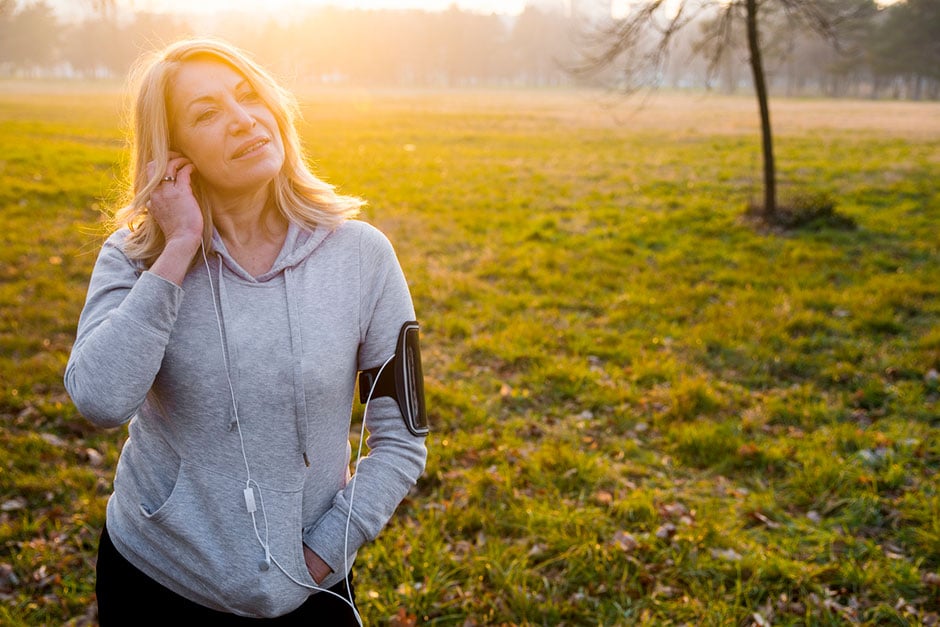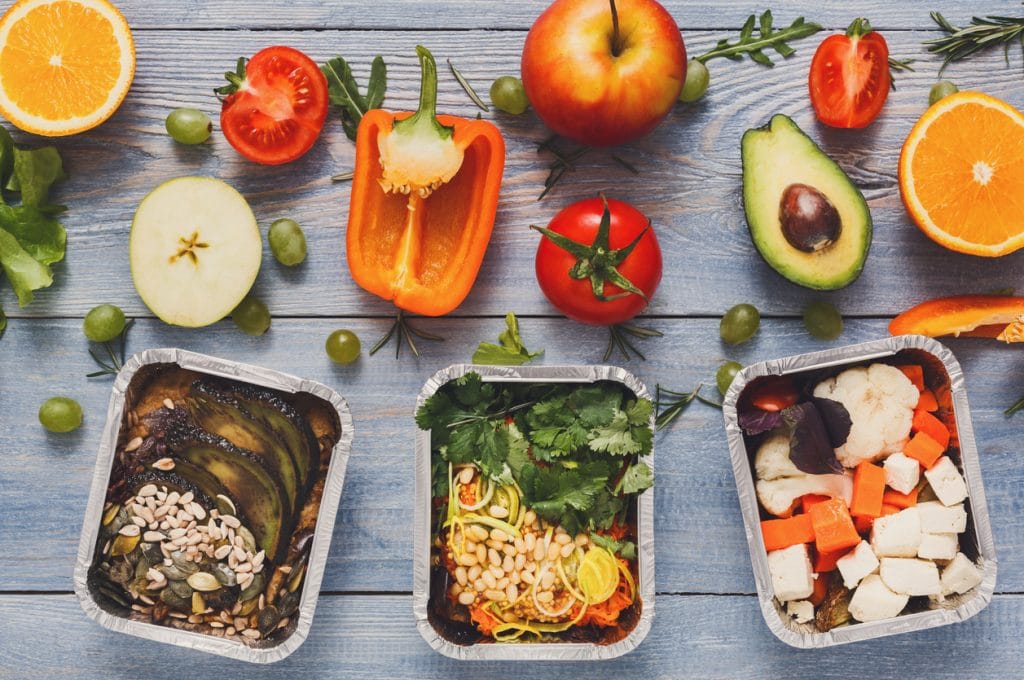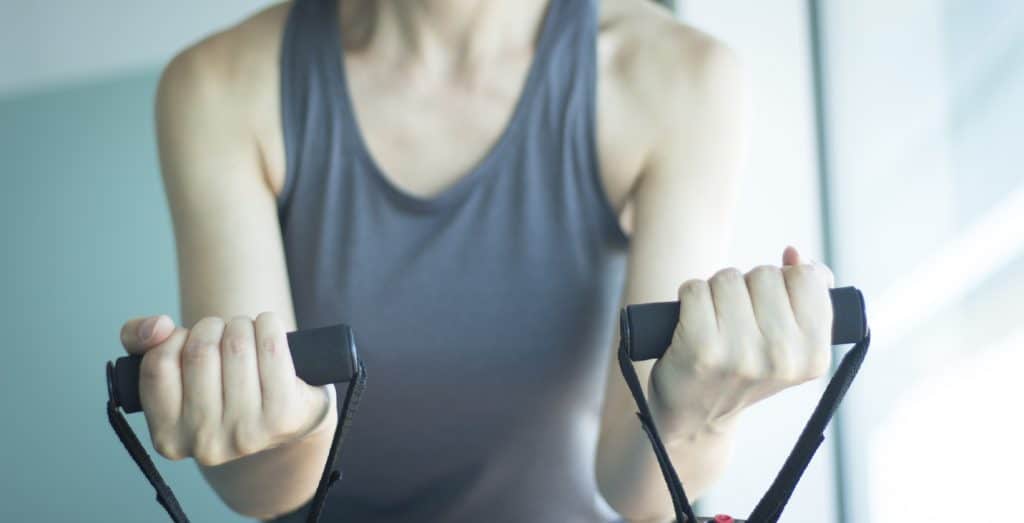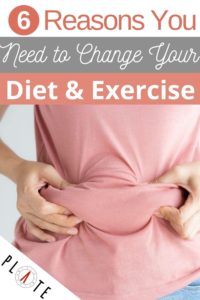
Why You Need to Change Your Exercise and Diet Plan
Posted on August 24, 2018 by wlda
Maybe you’ve always been able to keep your energy up—and your weight down—with minimal effort. But don’t be surprised if that luck runs dry after 50! It certainly does for the majority of women. That doesn’t mean, however, that you have to deprive yourself of good food or spend your life on the running track. Simply being more strategic about how you approach fitness can make a world of difference.
A New Way of Working Out
Metabolism slows as we age, which means our bodies fight harder to hold onto that body fat. While it once may have been easy to drop five pounds by hitting the gym for a couple of weeks, more strategizing is now in order just to maintain a healthy figure. So how do we break through the plateau? “Confuse” your metabolism with high-intensity interval training (HIIT). The HIIT system isn’t complicated and can be applied to your current preferred method of cardio, whether it’s running, biking, speed-walking or hiking.
HIIT involves alternating between periods of moving quite quickly and at great intensity, with periods of moderate movement. For example, you might do a couple laps in the pool using intense butterfly strokes, followed by four moderate laps of the breastroke. If you run, pick up the pace for a two minutes of quick, intense sprinting in which you pump your arms and legs vigorously, then alternate this with five minutes of moderate running.
One of the most immediate benefits of interval training is that it revs up your metabolism, allowing you to burn calories more freely. Even better, the fat-burning that’s jump-started through interval training has a stronger impact on those stubborn problem areas, especially belly fat.
So how do we break through the plateau? “Confuse” your metabolism with high-intensity interval training (HIIT). The HIIT system isn’t complicated and can be applied to your current preferred method of cardio, whether it’s running, biking, speed-walking or hiking.
HIIT involves alternating between periods of moving quite quickly and at great intensity, with periods of moderate movement. For example, you might do a couple laps in the pool using intense butterfly strokes, followed by four moderate laps of the breastroke. If you run, pick up the pace for a two minutes of quick, intense sprinting in which you pump your arms and legs vigorously, then alternate this with five minutes of moderate running.
One of the most immediate benefits of interval training is that it revs up your metabolism, allowing you to burn calories more freely. Even better, the fat-burning that’s jump-started through interval training has a stronger impact on those stubborn problem areas, especially belly fat.
Turn Your Meal Plans into Battle Plans
Many women edging into menopause can gain up to 15 pounds. Yet scale shock isn’t inevitable! If you’re in the habit of preparing three full meals, consider switching to five smaller meals. For older women with slower metabolism, full meals eaten several hours apart can cause your insulin levels to rise and fall unhealthily. Instead, keep your metabolism steady with about five smaller meals, eaten every few hours.
These snacks don’t have to be time-consuming to prepare. The key is to keep blood sugar steady by pairing a starchy or sweet food with a protein source. A single slice of bread with peanut butter is a classic balance of carbs and protein, as is Greek yogurt with blueberries.
If you’re in the habit of preparing three full meals, consider switching to five smaller meals. For older women with slower metabolism, full meals eaten several hours apart can cause your insulin levels to rise and fall unhealthily. Instead, keep your metabolism steady with about five smaller meals, eaten every few hours.
These snacks don’t have to be time-consuming to prepare. The key is to keep blood sugar steady by pairing a starchy or sweet food with a protein source. A single slice of bread with peanut butter is a classic balance of carbs and protein, as is Greek yogurt with blueberries.
Master Your Minerals
Some nutrients can be special weapons in the fight against middle-aged spread. But because your body begins making smaller amounts of these compounds as you age, they need to be consumed in foods or supplements. These nutrients help control blood sugar and burn fat, along with safeguarding our bones. Omega-3 fatty acids are “good” dietary fats that help you more efficiently burn unwanted body fat. You probably already know that Omega-3s are heart healthy and may have become familiar with the foods that are rich in these fatty acids. They include eggs and fatty fish such as salmon. If you dislike these foods, look for fish oil pills or other Omega-3 supplements. Calcium promotes bone density, which is crucial in the menopausal years and beyond. As you’re losing weight, you want to make sure you’re not also losing bone density. Eat more dairy, soy products or leafy green vegetables such as kale and broccoli. Dairy and soy products also boast plenty of protein, which helps keep you fuller for longer periods. Carnitine is another natural fat-burning substance that decreases in our bodies after 50 or so. To combat this drop in carnitine production, eat foods like avocados and lean red meat, which are rich in the nutrient. Finally, consider taking CoQ10 supplements. They’re not found in most foods, but in pill form they’re a useful way to stabilize blood sugar and stave off fat.Analyze Your Calorie Needs
As you get older, you need fewer calories a day to maintain a healthy weight. That means that if you don’t change your eating habits as you get older, extra pounds start creeping in. To combat this, cut about 200 calories from your daily intake. Sweets and alcohol should be the first to go, except on special occasions. If you’ve already started to notice a bit of middle-aged spread, this is the time to analyze where you can lose those extra calories. Of course, it makes sense to use a reputable calorie calculator before you get too drastic. A sedentary woman who is on the short side might be more in need of calorie cutting than an active, “big boned” woman.Pay More Attention to Flexibility
It’s no longer enough to do some light stretching a couple of times a week. As we get older, our tendons don’t have the elasticity they once did. To keep yourself from stiffening up more with every passing year, you need to change how often you stretch, as well as the way that you stretch. Because strength training is also important after 50 (more on that later!), it makes sense to commence your stretching after you’ve completed your resistance training. That strategy allows you to limber up while your muscles are still warm. Do all-over body stretches at least three times a week. Make sure to spend time extending every part of your body. They needn’t be fancy moves. The toe-touching, sky-reaching, and waist-twists you did in gym class still work wonders. A class at the gym or a session or two with a physical therapist can also give you some pointers.Don’t “Resist” Strength Training
When it comes to really developing the muscle mass you need to fight old age, resistance workouts are even more important than cardio. Bone density begins to decline at a rapid rate after your 50th birthday—unless you take steps to prevent that loss. Working your muscles puts “stress” on your bones, which respond by bulking up.
Whether you prefer free weights, push ups, or resistance bands, try to work on your key muscle groups—limbs, neck and back—a few times a week.
The post Why You Need to Change Your Exercise and Diet Plan appeared first on Prime Women | An Online Magazine.
Bone density begins to decline at a rapid rate after your 50th birthday—unless you take steps to prevent that loss. Working your muscles puts “stress” on your bones, which respond by bulking up.
Whether you prefer free weights, push ups, or resistance bands, try to work on your key muscle groups—limbs, neck and back—a few times a week.
The post Why You Need to Change Your Exercise and Diet Plan appeared first on Prime Women | An Online Magazine.

